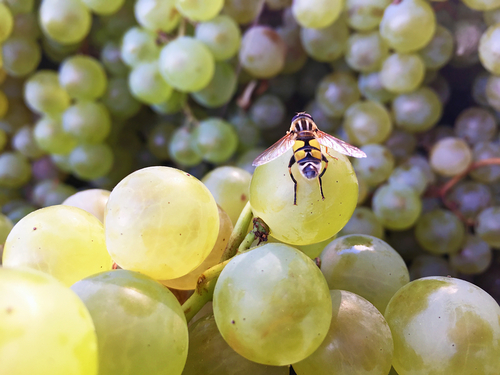
22 Oct Bees and Wine
We get a lot of produce from the work that bees do, and they likewise make it possible to produce the hay that feeds the livestock on our farms. Here’s the sobering reality: the honeybee population in the United States is struggling, and in the last 70+ years, we’ve seen a significant loss in the number of hives in the United States. Beekeepers work to recover those losses by splitting their hives and getting queen bees for the brand-new hives, however the truth remains that researchers are trying to figure out exactly what’s going on.
Marla Spivak, a lead researcher on bees, states this is occurring for a number of factors. To start with, as farming techniques have actually changed over the last numerous years, we’ve planted a growing number of monocultures– big crops of the exact same plant. As we’ve wiped out meadows and wildflower spaces in favor of single crops, it has had a remarkable result on bees and their food supply.
Monocultures are conducive to flowerless landscapes, and an ideal example of this is the almond crops in the United States. In order to produce that crop each year, over 1.5 million of the nation’s hives are actually driven to the almond orchards to pollinate the almonds. But once the almonds are done blossoming, the bees have tobe trucked out. Why? Due to the fact that once the progressing season is done, there’s absolutely nothing for the bees to rely on next. It’s a wasteland for them, and if they were left there, they ‘d pass away.
And here’s another thing: when we began planting monocultures, we also opened the door to an abundance of pests that feed on those particular crops. And it’s not surprising that bees would begin picking up some of the pesticide residue as they go about their business in a crop. Our use of herbicides has actually likewise created issues for bees, too.
A number of other aspects? Cover parasites and crops. Cover crops help bees grow, and we do not plant them like we used to, and parasites are taking bees out. (Varroa mites are a best example.) These 2 factors have actually made life really challenging for our honeybees and we are seeing remarkable implications today.
Bottom line? We’ve significantly changed our practices and introduced things that, one by one, have damaged our bees. And if we don’t switch things around or find out how to counteract the existing patterns, those ramifications are just going to heighten.
At this point, though, you might be wondering what bees relate to grapes and making wine. Grapes do not require bees to do any pollinating for them, however that does not mean they don’t have a crucial function to play. A post by Ben Weinberg assists answer the question of what that function is when he composes: “Bees are also pollinators for insectaries,’ describes Justin Leigon, viticulturist at Napa-based Piña Vineyard Management. An insectary is a grouping of plants that are frequently planted around vineyard obstructs or down the tractor rows. ‘They help these flowers are successful, which in turn draws advantageous predators such as woman beetles, green lacewings, soldier beetles and Anagyrus (a parasitic wasp for the vine mealybug). These are all general predators of vineyard pests, and their existence implies that we need to step in less since nature is doing it for us. Great deals of bees are hence a good indication that you have a healthy vineyard with a diverse community.”
The straight skinny is this: even though they may not be straight included with the development of beautiful grapes, bees definitely affect the quality and yield of grape crops, and the existence of bees in the vineyard signifies a higher range of life.
So … if you read all of this and feel a little alarmed at what’s happening with bees and how that may possibly affect us at large, you may be questioning exactly what you can do. If you want to be proactive about assisting the bees, cultivating a more natural community, and getting better wine from landscapes that are more biologically diversified, here are a few things you can do.
First, plant flowers that bees like! Feed the bees using your garden, your yard area, or pots on your patio! You might think about turning your lawn into a wildflower garden that brings in bees instead of putting in green yard.
Think about converting city areas (tops of buildings, for example) into green spaces where you can plant crops or flowers that bring in bees. If we are focused on thinking in green terms, we can make our lawns and neighborhoods more conducive to exactly what bees need.
And least you believe we’ve forgotten about our conversation about bees and wine, did you know that we offer wine trips with our charter bus rental New England? These trips are a wonderful method to slow down, do some tasting, and end up being better familiarized with vineyards in our area.
The details for this post came from the following sources:
http://ediblemarinandwinecountry.ediblecommunities.com/food-thought/vineyard-health-depends-on-bees
https://www.ted.com/talks/marla_spivak_why_bees_are_disappearing#t-939313
https://www.ted.com/talks/dennis_vanengelsdorp_a_plea_for_bees
https://www.ted.com/talks/noah_wilson_rich_every_city_nee



No Comments